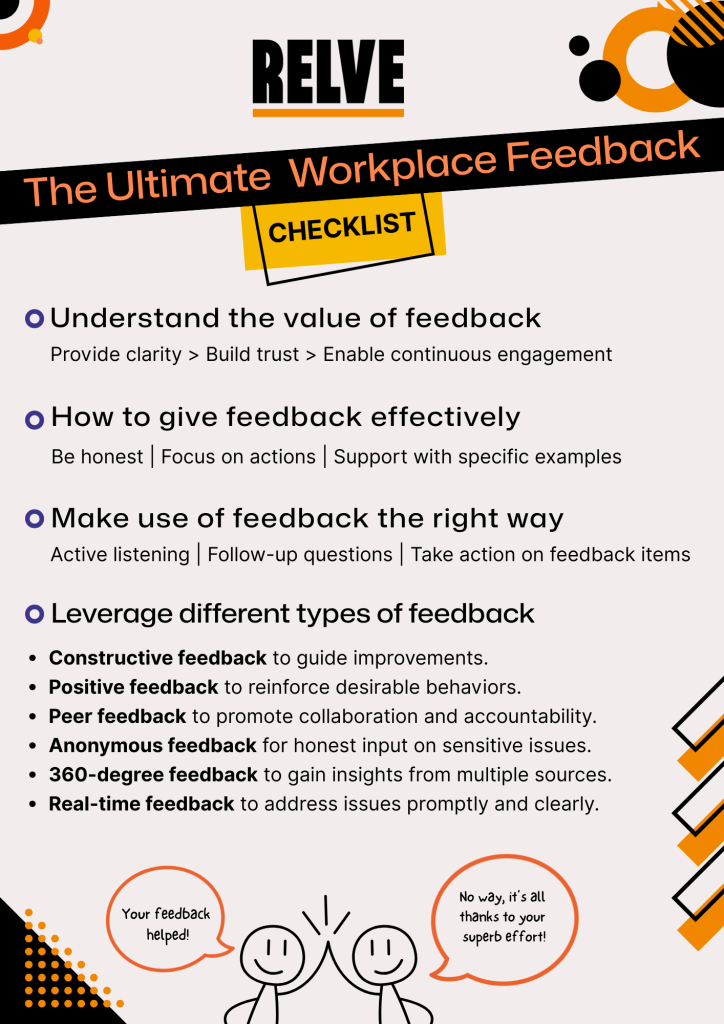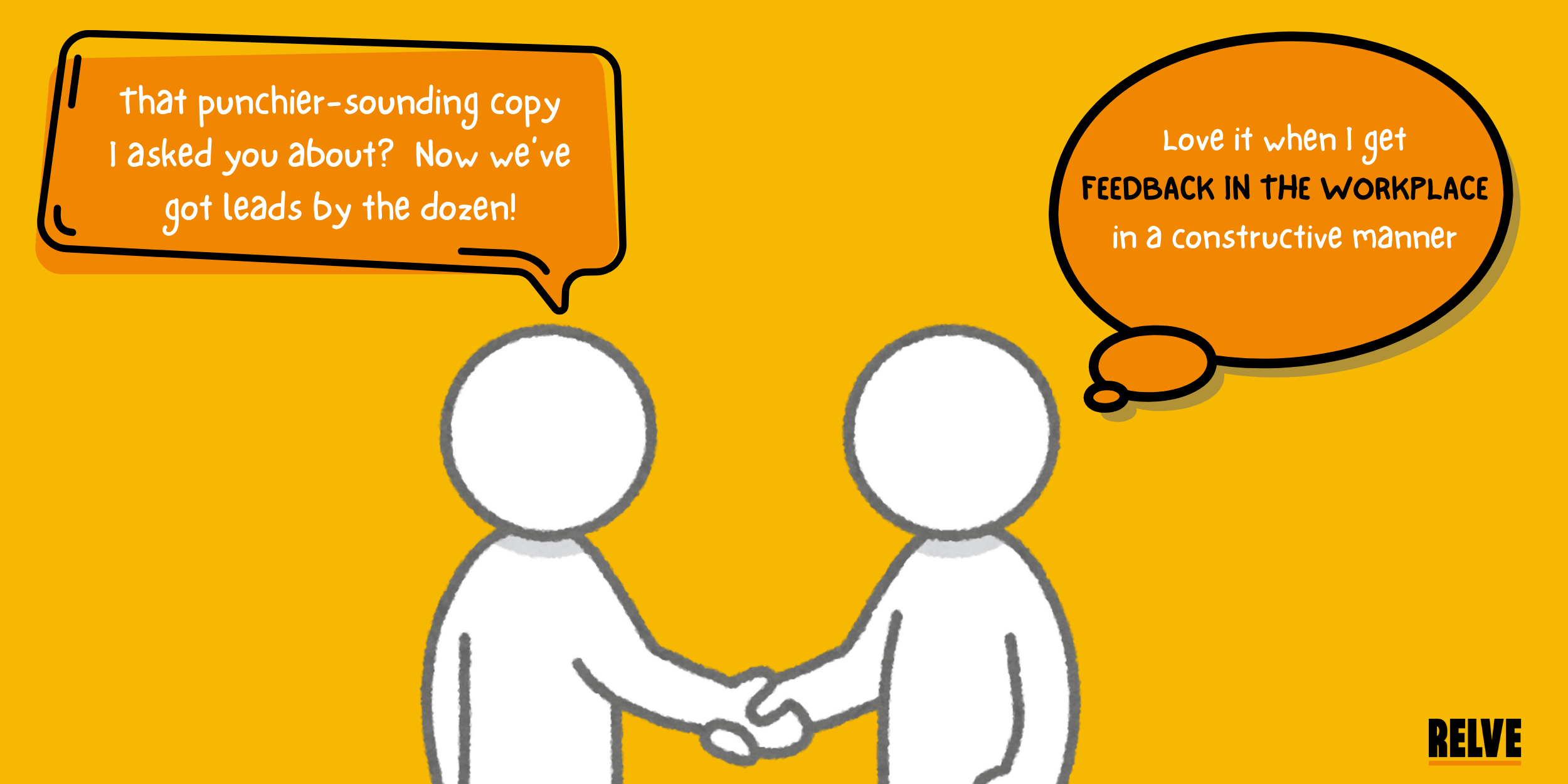Have you ever felt stuck after completing a project, wondering if your efforts hit the mark? That’s where feedback in the workplace becomes a game-changer. Without it, employees are left unsure if they’re excelling or missing the mark. In today’s dynamic work environment, feedback isn’t just a formality; it’s the foundation of growth, clarity, and teamwork.
Let’s explore how effective feedback in the workplace can transform not only individual performance but also drive collaboration and innovation across teams.
The best feedback isn’t about putting people in their place; it’s about helping them find their place.
Kim Scott, in Radical Candor
Why is Feedback Important in the Workplace?
The importance of feedback goes far beyond annual reviews or casual “good jobs.” It’s a continuous loop that fuels personal development, team synergy, and business success.
Here’s why every organization should prioritize it:
- Enhances Performance: Clear, consistent feedback helps employees refine their skills and deliver better outcomes.
- Fosters a Growth Mindset: When feedback highlights opportunities, not just mistakes, people embrace challenges.
- Builds Trust and Transparency: Open communication encourages collaboration and reduces workplace friction.
- Drives Innovation: Constructive insights lead to smarter ideas and refined solutions.
- Boosts Engagement: Employees feel valued when their efforts are recognized and guided.
When companies understand what feedback is, they unlock a powerful tool for continuous improvement.
Feedback is not just about what someone has done wrong but about what they could do better.
Thanks for the Feedback, Douglas Stone and Sheila Heen
Giving and Receiving Feedback in the Workplace: The Right Approach
Mastering both giving and accepting feedback is essential for a thriving feedback culture. Yet, many shy away from honest conversations, fearing discomfort or conflict.
Here’s how to shift that mindset:
How to Give Feedback Effectively
- Be Direct, Yet Compassionate: Honesty should always be paired with empathy.
- Focus on Actions, Not Personalities: Address behaviours, not character traits.
- Use Specific Examples: Precision prevents misunderstandings.
- Encourage Dialogue: Feedback should invite conversation, not shut it down.
How to Embrace Accepting Feedback in the Workplace
- Listen Actively: Drop the defences and truly hear what’s being said.
- Ask for Clarity: Ensure you understand the feedback’s intent.
- Reflect Before Reacting: Take time to process.
- Turn Insights into Action: Growth happens when feedback leads to change.
Many employees hesitate when it comes to giving feedback, fearing that it might offend or discourage colleagues. However, feedback delivered with empathy and clarity fosters positive change.
Great feedback is not about what happened yesterday, but what’s possible tomorrow.
Joe Hirsch, in The Feedback Fix
The Benefits of Strong Feedback Strategies in the Workplace
Companies that embed feedback into their culture see measurable benefits:
- Higher Employee Engagement
- Reduced Turnover Rates
- Faster Skill Development
- Improved Team Collaboration
- Greater Innovation Flow
A consistent approach to feedback transforms uncertainty into clarity and stagnation into momentum.
Different Types of Feedback in the Workplace You Should Use
Not all feedback serves the same purpose. Leveraging multiple types ensures your team gets well-rounded support:
- Constructive Feedback: Focused on improvement, offering clear solutions.
- Positive Feedback: Reinforces behaviours you want repeated.
- Peer Feedback in the Workplace: Encourages collaboration and accountability.
- Anonymous Feedback in the Workplace: Enables honest input in sensitive situations.
- 360-Degree Feedback: Provides a comprehensive view from all levels.
- Real-Time Feedback: Delivers immediate guidance when it matters most.
Turning Feedback into a Workplace Superpower
When feedback becomes part of everyday culture, teams thrive. It’s not just about correcting mistakes—it’s about continuous growth, stronger collaboration, and unlocking potential.
Key Takeaways
- Feedback in the workplace should be timely, specific, and solution-focused.
- Both giving and receiving feedback in the workplace are skills that improve with practice.
- Strong feedback strategies lead to better performance, higher engagement, and improved retention.
- Use the different types of feedback to address various situations effectively.
- Remember, silence breeds confusion—feedback fosters clarity and growth.
The most motivated individuals are those who receive ongoing feedback, not just annual evaluations.
Drive by Daniel H. Pink
So, how do you implement feedback strategies at work? Start today by creating a culture of effective feedback in the workplace and watch your team flourish.

